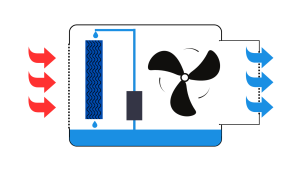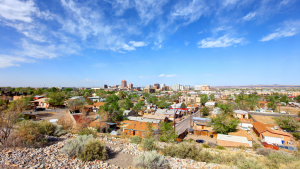How Does a Swamp Cooler Work?
If you have a swamp cooler or are looking to purchase one, you might be wondering—how do swamp coolers actually work? We’re going to get into the nitty-gritty, talk about some FAQs surrounding evaporative coolers, and share the best and worst places to use an evaporative cooler.
Is a Swamp Cooler an Evaporative Cooler?
 The name “swamp cooler” doesn’t conjure a great image in one’s mind. Who wants their home to be like a swamp?
The name “swamp cooler” doesn’t conjure a great image in one’s mind. Who wants their home to be like a swamp?
But, if you weren’t aware, swamp coolers are technically called evaporative coolers, and that name should give you a hint about how these appliances work. “Swamp cooler” actually started out as a slang term, referring to an overly-humid, swampy environment they create when not maintained properly, or used in the wrong environment.
We’ll keep using the terms swamp cooler and evaporative cooler interchangeably. And any HVAC technician would know what you were talking about, regardless of which term you use.
How Do Swamp Coolers Work?
 Swamp coolers are almost like a simpler version of central air conditioners. Instead of using refrigerant to cool the air like an air conditioner, an evaporative cooler passes air from the outside over pads soaked with water. This is the simplest way of explaining it, but let’s go a little further in depth.
Swamp coolers are almost like a simpler version of central air conditioners. Instead of using refrigerant to cool the air like an air conditioner, an evaporative cooler passes air from the outside over pads soaked with water. This is the simplest way of explaining it, but let’s go a little further in depth.
The Earliest Form of Evaporative Cooling
The Ancient Egyptians provide the first documented examples of evaporative cooling at work. We’ve, of course, made it more sophisticated, but the science in action is the same. According to How Stuff Works,
“The ancient Egyptians had a great need for air conditioning. They accomplished it by hanging wet blankets across the doors of their homes or, if they happened to be royalty, having servants fan them across jugs of water. When hot dry air passes over water (or better yet, through it), the air cools off. Nowadays, we use electric fans instead of servants, but the principle of cooling the air by evaporation remains the same.”
You’ve probably experienced this same science at work if you’ve ever checked for wind by licking your finger and sticking it in the air, or when you hop out of a pool. As the water evaporates off your body, you feel cool.
The Supply Valve Brings Water into Bottom of the Swamp Cooler
The process all starts with water filling the bottom of your swamp cooler. No matter where your swamp cooler is (ground or roof), there is a copper pipe that brings water from your water line near your water heater to your swamp cooler. This water is controlled by this water supply valve.
Water Levels Are Controlled by the Float
The float is on the bottom of a swamp cooler, and as the water levels rise, the float triggers that the water flow stops. As water evaporates and water levels decrease, more water is added. The water needs to be high enough to soak the evaporate cooler pads.
Warm Air is Pulled Through Evaporative Cooler Pads
The swamp cooler pulls in outdoor air, which is one of the features people love about swamp coolers—fresh air. That air passes over the soaked pads and is cooled by the water. To say it differently, water evaporates into the air, cooling it.
The Blower Fan Pushes the Cool Air into the Home
The blower fan has the next big job, pushing the cool air into the home. And the cycle continues. A swamp cooler is an open system, so air is continually pulled in from outside the home and pushed into the house. That’s why if you have a swamp cooler, you have to leave a window open to relieve the air pressure. Central AC, on the other hand, recirculates the same air all the time.
How to Get the Most Out of Your Evaporative Cooler
 Swamp coolers are less expensive, more energy efficient, and are great about putting humidity into the air in a dry climate. However, there are a few things that must be in place for them to work optimally.
Swamp coolers are less expensive, more energy efficient, and are great about putting humidity into the air in a dry climate. However, there are a few things that must be in place for them to work optimally.
Crack a Window(s)
Having a window cracked when running your swamp cooler is a must. If you’ve ever been in a home with central AC and a slightly neurotic mom, you’ve probably heard them shouting, “Don’t leave the door open! You’re letting all the cool air out!”
It’s actually the opposite with a swamp cooler. You have to leave a window, or multiple windows, cracked in order to allow the warm air to leave as it’s replaced by cool air.
If you notice doors slamming when the swamp cooler turns on, or a constant whistle or humming sound, you need to open another window to create more airflow.
Make Sure Evaporative Pads are Wet
The evaporative pads are the key to this whole operation. They need to be damp, but not soaking. The pump should take care of that since it pumps water through the water distribution lines. Still, if it seems like your swamp cooler isn’t working, it would be worth it to see if the pads are wet. If they aren’t, your water valve, pump, or float might not be functioning correctly. This would be a great time to contact an HVAC professional.
Use a Digital Thermostat
With the standard swamp cooler controls, users essentially just turn the swamp cooler off when the house feels cool enough. This can be wasteful since if you’re not home, or overnight, the swamp cooler won’t turn off by itself when the home reaches a certain temperature.
If you upgrade to a digital thermometer, you gain the ability to have the swamp cooler automatically shut off at a designated temperature.
Be Aware of Humidity Levels
The climate you live in plays a big role in whether or not an evaporative cooler is right for your home. Swamp coolers operate best in dry, warm climates. That’s why in the U.S. they’re more popular in states like New Mexico, Arizona, and Nevada.
Even if you’re in a dryer state, weather can affect the humidity, and you may find yourself in a situation where your home feels muggy. If that happens, you can turn off the evaporative feature and use the swamp cooler in “vent-only” mode. That way, you can keep airflow moving through your home without adding more humidity.
Some Frequently Asked Questions about Swamp Coolers
 Do swamp coolers work in 100-degree weather?
Do swamp coolers work in 100-degree weather?
A swamp cooler will function at 100 degrees. But, it only cools the air to about 20 degrees blow the outside temperature. Some models claim they can cool more than that. But as cooling specialists in Albuquerque, we see that a 20-degree drop is common. So, on a 100-degree day, it’s still 80 degrees in your home.
Is that livable? Sure. But if you’d prefer to be more comfortable on more days, air conditioning is your best bet.
What’s the difference between a swamp cooler and an air conditioner?
A swamp cooler uses water to cool the air that passes through the swamp cooler like we talked about earlier. Air conditioning, or forced air, cools the air a different way. It uses refrigerant, which captures heat from the air and carries it outside to the condenser unit. Refrigerant is a chemical substance—Freon may be one that you’re familiar with. Air conditioning has the ability to get the air much cooler than a swamp cooler.
Another difference is that forced air continues to recycle the same air, whereas a swamp cooler is continually bringing in fresh air.
When should you not use a swamp cooler?
You should not use a swamp cooler if you live in a humid area, or if you region has an unusual spike of humidity. The lower the humidity, the more effectively the swamp cooler can work. So in 10% humidity, a swamp cooler works great. In 50% humidity, you might barely notice cooler air coming from your swamp cooler.
If you have a spike in humidity, you can always run your swamp cooler on “vent-only” mode to get some air movement in your home without the additional humidity.
Where are swamp coolers most effective?
Swamp coolers are most effective in dry, warm climates. The hotter it gets, the drier it needs to be for a swamp cooler to work. This is why swamp coolers are common in the Southwest.
Swamp Coolers Work Best in Dry Climates Like Albuquerque
 Swamp coolers certainly are one way to cool your home, especially here in New Mexico. While some homeowners have switched over to refrigerated air, there are still many that prefer their swamp cooler. Swamp coolers are less expensive, they’re more energy-efficient, and they don’t require ducting, which is ideal for older homes.
Swamp coolers certainly are one way to cool your home, especially here in New Mexico. While some homeowners have switched over to refrigerated air, there are still many that prefer their swamp cooler. Swamp coolers are less expensive, they’re more energy-efficient, and they don’t require ducting, which is ideal for older homes.
If you’re looking for swamp cooler repair or replacement in the Greater Albuquerque Area, give us a call at Bosque Heating, Cooling & Plumbing for a free consultation.




 Do swamp coolers work in 100-degree weather?
Do swamp coolers work in 100-degree weather?